When I vacationed in Singapore and Malaysia, I chose to visit a disproportionately high number of religious sites. By disproportionate I don’t mean that tourists shouldn’t or never go to the places I went to, but they weren’t necessarily the area’s main attractions. In Singapore, I spent the better part of one day exploring a Buddhist temple and two Hindi temples, when I could have been shopping on the famed Orchard Street. In Malacca, my hotel provided a tourist map and the words “mosque,” “temple,” and “church” kept piquing my interest. I understand I have a quirky propensity for religious sites, but believe they can be a great way to get to know a region – no matter what your personal beliefs.
While browsing Singaporean attractions, I was lured to Sri Mariamman Temple by its gopuram, a monument above the entrance with gorgeous, intricate carvings of Hindi symbols. It is the oldest Hindi temple in Singapore, and now serves the large Tamil Indian immigrant population. In addition to being a place of worship, it provides a community of support for new Indian immigrants.
I didn’t know any of this when I first visited; this was research after the fact. Instead, I just gazed at all the colorful paintings and sculptures, amazed by the unknown. It was a different feeling than walking into a gorgeous cathedral, where I might be familiar with Christian symbols. I had similar experiences at Sri Veeramakaliamman Temple, but unlike the nearly empty Sri Mariamman I visited, there was a large group there for evening worship. All around the temple, devotees were paying their respects to various Gods and Goddesses, while others kneeled on the floor. I tried to immerse myself in the spirituality around me, so decided to say a prayer too. Unfortunately, I had zero knowledge of who any of the Hindi Gods and Goddesses were, so chose to pray to – well - the centerpiece of the room:
I didn’t know any of this when I first visited; this was research after the fact. Instead, I just gazed at all the colorful paintings and sculptures, amazed by the unknown. It was a different feeling than walking into a gorgeous cathedral, where I might be familiar with Christian symbols. I had similar experiences at Sri Veeramakaliamman Temple, but unlike the nearly empty Sri Mariamman I visited, there was a large group there for evening worship. All around the temple, devotees were paying their respects to various Gods and Goddesses, while others kneeled on the floor. I tried to immerse myself in the spirituality around me, so decided to say a prayer too. Unfortunately, I had zero knowledge of who any of the Hindi Gods and Goddesses were, so chose to pray to – well - the centerpiece of the room:
Also in Singapore, I visited the Buddha Tooth Relic Temple, which houses the tooth of Buddha himself. Buddhism is the main religion of Singapore, comprising about the third of the population, and the majority of Buddhists in Singapore are Chinese. I saw a small fraction of them at a prayer session in this temple, with sounds and rhythms so beautiful, peaceful, and alluring it was like a song, not a spoken prayer. I still don’t know what language it was – it didn’t sound like Mandarin although my Mandarin isn’t great – but the music within it soothed the soul, language barriers notwithstanding.
Upstairs, there was a golden chamber that purportedly holds the tooth of Buddha, surrounded by areas designated for meditation. Even if you know nothing about Buddhism, this is a wonderful place to relax and gather your thoughts. I was amazed that such an oasis of peace and quiet existed in the middle of Singapore Chinatown, bustling with people, cars, and not the mention that summer heat. And if one manages to find calm amidst all that, no matter what religious beliefs they harbor, isn’t that experience inherently spiritual?
Upstairs, there was a golden chamber that purportedly holds the tooth of Buddha, surrounded by areas designated for meditation. Even if you know nothing about Buddhism, this is a wonderful place to relax and gather your thoughts. I was amazed that such an oasis of peace and quiet existed in the middle of Singapore Chinatown, bustling with people, cars, and not the mention that summer heat. And if one manages to find calm amidst all that, no matter what religious beliefs they harbor, isn’t that experience inherently spiritual?
My vacation was primarily in Singapore, but I took a short trip to Malacca. Despite their geographical proximity, and some similarities in ethnic makeup and culture, the religious climate of Malaysia is quite different from Singapore. The main religion of Singapore is Buddhism, about a third of the country, followed by Christianity, about a fifth of the country. On the other hand, around 60% of Malaysians are Muslim – and if you’re a young female tourist wearing Western-style summer clothing, you will start to “feel” the hijabs around you. It is unclear whether Malaysia is a “Muslim country”: Islam is the “official” religion of Malaysia, but Malaysian law guarantees religious freedom. There is an Islamic legal system, but it only applies to Muslims while everyone else is subject to secular laws.
That being said, the first religious site I visited here was not a mosque. It was a Protestant Christian church in Dutch Square, the busiest and most vibrant part of town. I grew up in a Texas suburb where Christianity was prevalent, where Sunday church was a central part of life, so I was amazed by the universality of faith. I’m certainly not suggesting that all members of the same religion are alike. However, I find it remarkable that the same faith can transplant itself into different regions with vastly different language and local customs.
That being said, the first religious site I visited here was not a mosque. It was a Protestant Christian church in Dutch Square, the busiest and most vibrant part of town. I grew up in a Texas suburb where Christianity was prevalent, where Sunday church was a central part of life, so I was amazed by the universality of faith. I’m certainly not suggesting that all members of the same religion are alike. However, I find it remarkable that the same faith can transplant itself into different regions with vastly different language and local customs.
In downtown Malacca, there is a cute token of interfaith understanding – Harmony Street. The street is so nicknamed because a Hindi temple, a Buddhist temple, and a Muslim mosque are situated within close proximity of each other. They did seem to coexist peacefully, although the sign pictured below was found outside Kampung Kling Mosque. I wondered how or if they would check, but as a single girl in a (rather low-cut) tank top, I decided to stay away. Nevertheless, Harmony Street is a testament to the vast diversity in Malaysia, created through a colorful history of colonization and immigration.
I did eventually find myself inside a mosque. The Malacca Straits Mosque is not as heavily advertised or easily accessible as the World Heritage sites, so I hired to a cab driver to take me there, wait 10-15 minutes, and then take me back. The outside was a stunning work of architecture, lens candy for my camera, but I was curious about the inside. Unlike Kampung Kling Mosque, I didn’t see a sign requesting non-Muslims to stay outside, so I took my shoes off and timidly approached it.
I went up a few steps before a man politely informed me, in very good English, that I could not go inside without covering my body and hair. He pointed out where the burqas and hijabs were, and went out of his way to show me when I got slightly lost. A female janitor who was cleaning the restroom helped me put them on – the pieces of clothing felt so foreign to me – and then smiled and encouraged me to look in the mirror. At least through interactions with these two people, I felt welcome in the mosque.
I went up a few steps before a man politely informed me, in very good English, that I could not go inside without covering my body and hair. He pointed out where the burqas and hijabs were, and went out of his way to show me when I got slightly lost. A female janitor who was cleaning the restroom helped me put them on – the pieces of clothing felt so foreign to me – and then smiled and encouraged me to look in the mirror. At least through interactions with these two people, I felt welcome in the mosque.
And thus I went inside, where I admired the prayer hall. A contrast to my Singapore experiences, where I saw ornate Hindi deities and exquisite Buddhist sculptures, this Muslim prayer hall was gorgeous in its simplicity. There were no intricate decorations, just a spacious room open to the Indian Ocean’s gentle waves. Certainly a different approach to worshipping God, anyone seeking spiritual enlightenment here would have few distractions.
When I got back to my hotel, I chatted with the taxi attendant who’d helped me find a ride to the Malacca Straits Mosque. He asked if I had a good time…and I ended up telling him an abridged version of the story I just told here. I told him about Kampung Kling Mosque and the sign forbidding non-Muslims from entering, and his reaction was disbelief:
“As long as you put on the required clothing, you are welcome in a mosque. Malaysia is very diverse, and we are tolerant of everyone.”
“Malaysia is diverse,” I agreed. “It’s amazing that different cultures have found different ways to love God, to achieve the same goal through different means.”
He wholeheartedly concurred. I have no idea what religious or cultural upbringing this guy had, but in a fleeting conversation, we agreed on this one idea. I said goodbye to catch my bus back to Singapore, and flew back to San Francisco the next day.
In summary, I really, really enjoyed these visiting places of worship in Singapore and Malaysia. You wouldn’t go to Thailand without visiting a temple, or Turkey without visiting a mosque. While less true in Singapore and Malaysia, where temples and mosques are not as central to tourism, they were still a great way to get to know the region. First of all, the religious sites I visited were beautiful. Even hardcore atheists can enjoy the physical beauty – you’ll see a nice work of art if nothing else. The Malacca Straits Mosque is already a favorite with photographers; not only is the architecture stunning, it’s built on the man-made Malacca Island and looks like a floating structure.
“As long as you put on the required clothing, you are welcome in a mosque. Malaysia is very diverse, and we are tolerant of everyone.”
“Malaysia is diverse,” I agreed. “It’s amazing that different cultures have found different ways to love God, to achieve the same goal through different means.”
He wholeheartedly concurred. I have no idea what religious or cultural upbringing this guy had, but in a fleeting conversation, we agreed on this one idea. I said goodbye to catch my bus back to Singapore, and flew back to San Francisco the next day.
In summary, I really, really enjoyed these visiting places of worship in Singapore and Malaysia. You wouldn’t go to Thailand without visiting a temple, or Turkey without visiting a mosque. While less true in Singapore and Malaysia, where temples and mosques are not as central to tourism, they were still a great way to get to know the region. First of all, the religious sites I visited were beautiful. Even hardcore atheists can enjoy the physical beauty – you’ll see a nice work of art if nothing else. The Malacca Straits Mosque is already a favorite with photographers; not only is the architecture stunning, it’s built on the man-made Malacca Island and looks like a floating structure.
Moving past outward appearances, places of worship often reflect the culture of an area. For example, the Hindi temples in Singapore serve the large Tamil Indian immigrant population, a major part of modern Singaporean society. A predominantly Buddhist society, Singapore received a Sacred Tooth Relic of Buddha as a gift, and constructed the Buddha Tooth Relic Temple and Museum to house it. The largest ethnic group in Singapore is Chinese, so it’s no surprise the temple has a traditional Chinese look, in the style of the Tang Dynasty. Architects from mainland China were enlisted to help with the design.
Now, having discussed physical beauty and cultural significance, this is going to get slightly more spiritual. Visiting these places of worship made me feel connected to the world, because they reminded me of how much we have in common. If you see something you’re familiar with – for me it was a Christian church in Malacca – you’ll see how the same exact faith can be present in very different cultures. Yet even with unfamiliar religions, similarities can be found. While I knew little about Hindi, Buddhist, and Muslim icons and customs, I could always tell when someone was praying – bowed head, deep in concentration, hands together, perhaps kneeling – these are universal expressions of spiritual activity. Also, what tourist doesn’t like a little bit of mystery? I liked exploring unfamiliar religious symbols, because isn’t the point of traveling to see new things? But going back to my point about feeling connected: Yes, those intricate Hindi deities were a mystery to me. But not a completely mystery, because faith is universal, so it was mysterious yet familiar at the same time. And that is pretty amazing.
If you’ve read this far, you might be wondering what my personal religious beliefs are. I grew up in an area where Christianity was prominent and prevalent, went to church a few times, but was not raised “religious.” However, I do believe in God and spirituality, which informs my propensity toward visiting religious sites. In particular, when I returned home after this trip, I prayed for the hotel taxi attendant I’d met in Malaysia. I thanked God for the brief conversation I had with him, and wished for God to watch over him. With that disclaimer out of the way, I think visiting places of worship can enrich a vacation in Singapore and Malaysia.
Now, having discussed physical beauty and cultural significance, this is going to get slightly more spiritual. Visiting these places of worship made me feel connected to the world, because they reminded me of how much we have in common. If you see something you’re familiar with – for me it was a Christian church in Malacca – you’ll see how the same exact faith can be present in very different cultures. Yet even with unfamiliar religions, similarities can be found. While I knew little about Hindi, Buddhist, and Muslim icons and customs, I could always tell when someone was praying – bowed head, deep in concentration, hands together, perhaps kneeling – these are universal expressions of spiritual activity. Also, what tourist doesn’t like a little bit of mystery? I liked exploring unfamiliar religious symbols, because isn’t the point of traveling to see new things? But going back to my point about feeling connected: Yes, those intricate Hindi deities were a mystery to me. But not a completely mystery, because faith is universal, so it was mysterious yet familiar at the same time. And that is pretty amazing.
If you’ve read this far, you might be wondering what my personal religious beliefs are. I grew up in an area where Christianity was prominent and prevalent, went to church a few times, but was not raised “religious.” However, I do believe in God and spirituality, which informs my propensity toward visiting religious sites. In particular, when I returned home after this trip, I prayed for the hotel taxi attendant I’d met in Malaysia. I thanked God for the brief conversation I had with him, and wished for God to watch over him. With that disclaimer out of the way, I think visiting places of worship can enrich a vacation in Singapore and Malaysia.
THE ATTRACTIONS DESCRIBED ABOVE ARE LOCATED AT:
1.) Sri Mariamman Temple: 244 S Bridge Rd Singapore 058793 (Chinatown)
2.) Sri Veeramakaliamman Temple: 141 Serangoon Rd Singapore 218042 (Little India)
3.) Buddha Tooth Relic Temple and Museum: 288 S Bridge Rd, Singapore 05884 (Chinatown)
4.) Christ Church Melaka: Jalan Gereja Malacca, Malaysia (Dutch Square near downtown)
5.) Harmony Street: Jalan Tukang Emas 75200 Malacca, Malaysia (downtown area, slightly off the main Jonker Street)
TIPS FOR VISITING THESE PLACES OF WORSHIP
1.) In most of the Hindi temples, Buddhist temples, and Muslim mosques I visited, shoes must be taken off. Be aware that in outdoor areas inside the place of worship, the ground can get extremely hot if the sun is at full blast.
2.) At the Buddhist Tooth Relic temple, shorts and tank tops are not allowed, but they provide sarongs to cover up. Short sleeve shirts and skirts past the knees seemed to be okay. I don't remember having to do this at the Cheng Hoon Teng Temple in Malacca.
3.) At the Malacca Straits Mosque, women will need to put on a burqa and hijab, which are provided. I'm not sure if the hijab would have sufficed had I been wearing long pants (I was wearing three quarter length yoga pants). I'm also not sure what the dress code for men is, although I imagine it can't hurt to wear pants instead of shorts.
4.) Be respectful. It's obvious but worth repeating. If people are in a state of worship and prayer, don't run around making large amounts of noise and don't disturb them.
5.) That being said, devotees won't mind a visitor who is respectful and looks interested in learning something. Don't be shy!
RELATED ITINERARIES
1.) Singapore and Malaysia, June 2013: Singapore – Day 1, Day 2, Day 3 | Malaysia – Day 4, Day 5 | For Future Travelers
1.) Sri Mariamman Temple: 244 S Bridge Rd Singapore 058793 (Chinatown)
2.) Sri Veeramakaliamman Temple: 141 Serangoon Rd Singapore 218042 (Little India)
3.) Buddha Tooth Relic Temple and Museum: 288 S Bridge Rd, Singapore 05884 (Chinatown)
4.) Christ Church Melaka: Jalan Gereja Malacca, Malaysia (Dutch Square near downtown)
5.) Harmony Street: Jalan Tukang Emas 75200 Malacca, Malaysia (downtown area, slightly off the main Jonker Street)
- Cheng Hoon Teng Temple (Buddhist Temple)
- Kampung Kling Mosque (Muslim Mosque)
- Sri Poyatha Moorthy Temple (Hindi Temple)
TIPS FOR VISITING THESE PLACES OF WORSHIP
1.) In most of the Hindi temples, Buddhist temples, and Muslim mosques I visited, shoes must be taken off. Be aware that in outdoor areas inside the place of worship, the ground can get extremely hot if the sun is at full blast.
2.) At the Buddhist Tooth Relic temple, shorts and tank tops are not allowed, but they provide sarongs to cover up. Short sleeve shirts and skirts past the knees seemed to be okay. I don't remember having to do this at the Cheng Hoon Teng Temple in Malacca.
3.) At the Malacca Straits Mosque, women will need to put on a burqa and hijab, which are provided. I'm not sure if the hijab would have sufficed had I been wearing long pants (I was wearing three quarter length yoga pants). I'm also not sure what the dress code for men is, although I imagine it can't hurt to wear pants instead of shorts.
4.) Be respectful. It's obvious but worth repeating. If people are in a state of worship and prayer, don't run around making large amounts of noise and don't disturb them.
5.) That being said, devotees won't mind a visitor who is respectful and looks interested in learning something. Don't be shy!
RELATED ITINERARIES
1.) Singapore and Malaysia, June 2013: Singapore – Day 1, Day 2, Day 3 | Malaysia – Day 4, Day 5 | For Future Travelers
- Day 3, Day 4, and Day 5 above are relevant to this post
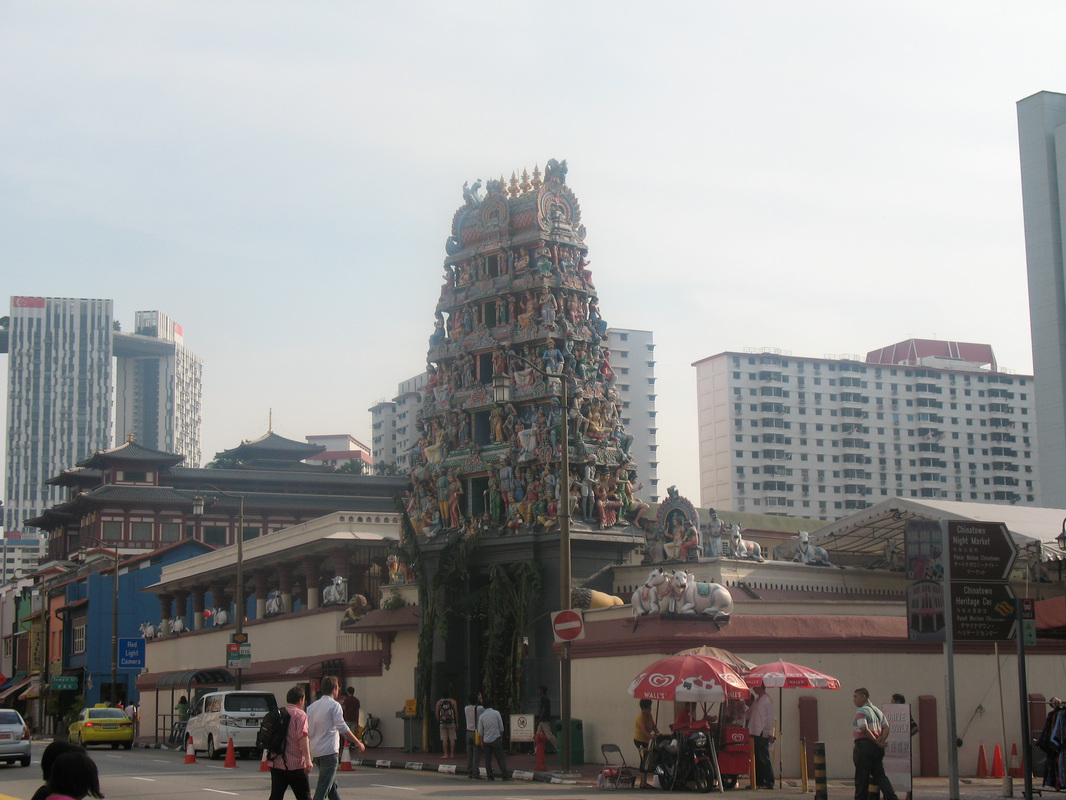


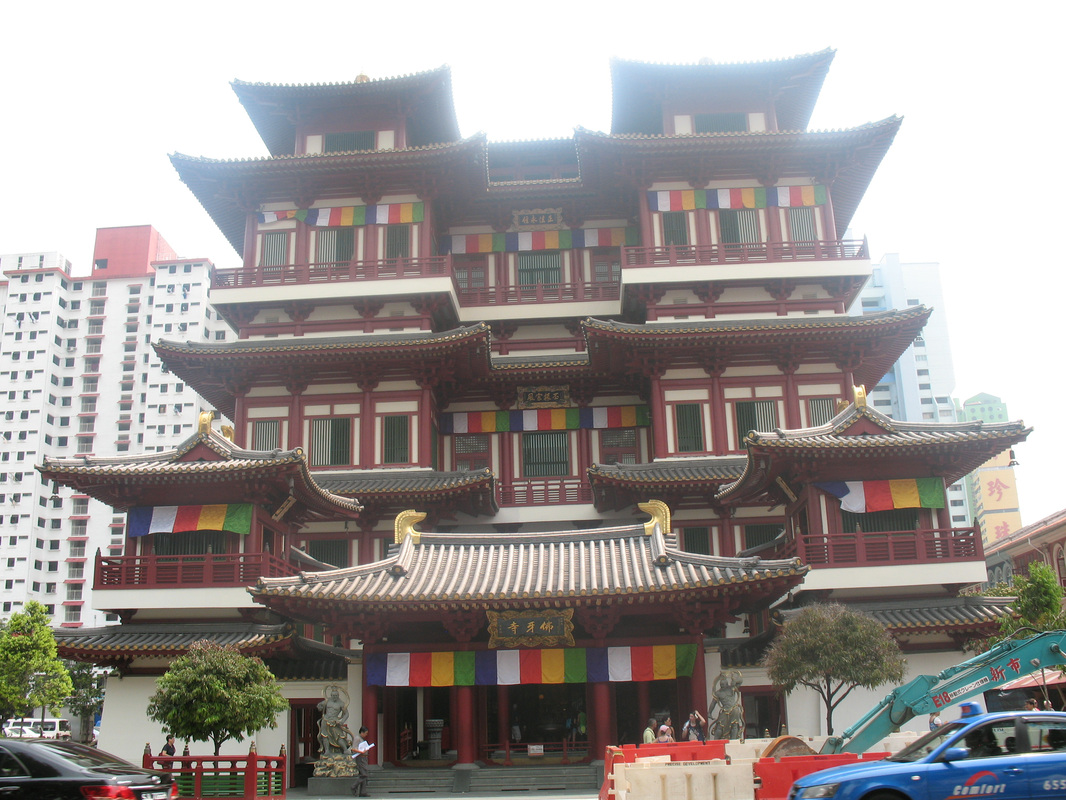

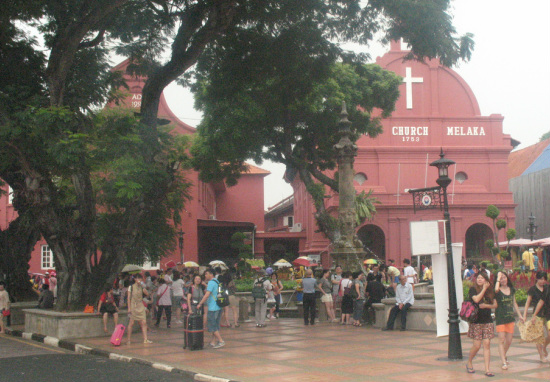



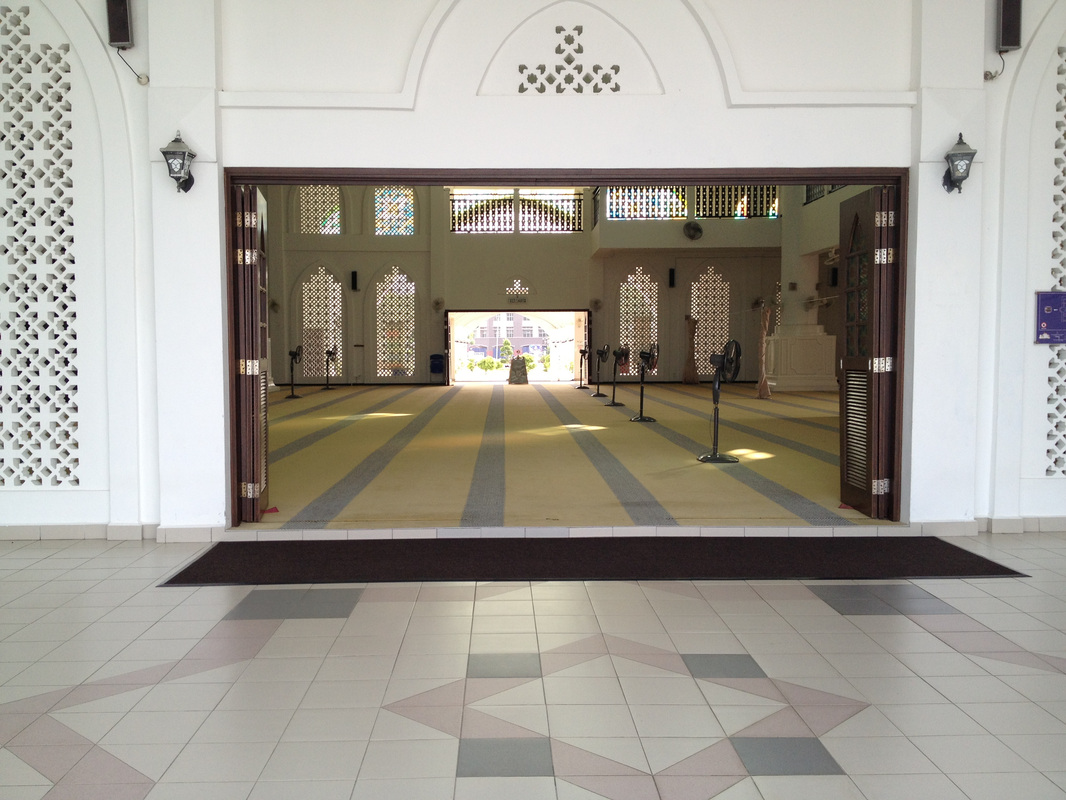
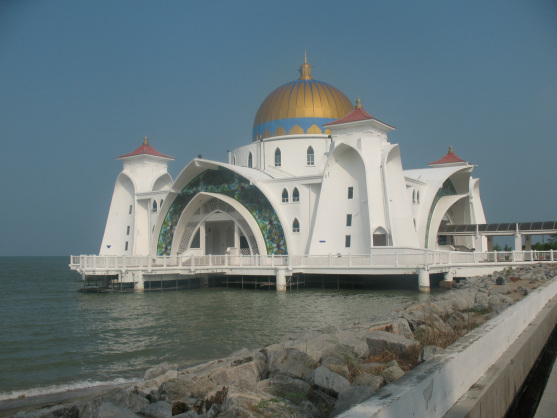
 RSS Feed
RSS Feed